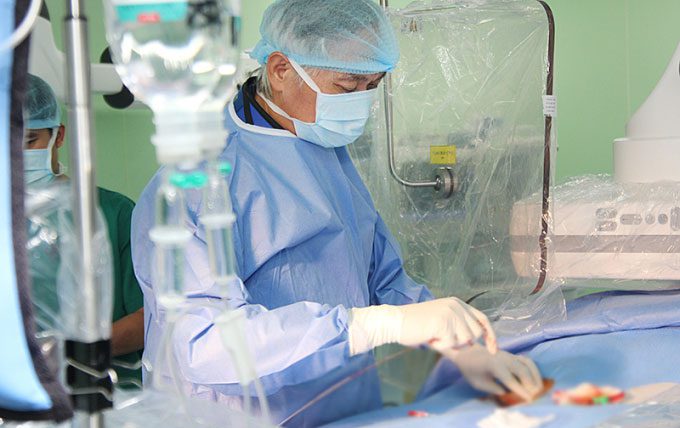High blood lipids are a common cause of heart attacks and strokes, alongside hypertension and diabetes.
“High blood lipids form atherosclerotic plaques, causing narrowing and blockage of arteries, which can lead to heart attacks and strokes,” said Dr. Vu Dinh Thang, a senior specialist at Gia An 115 Hospital, during a seminar on high blood lipids held on October 28.
According to Dr. Thang, heart attacks and strokes are two dangerous acute conditions that can lead to death if not intervened promptly. Meanwhile, about 25% of heart attacks occur without chest pain or any symptoms. Therefore, proactive prevention and control of causes such as high blood lipids are crucial.
The majority of heart attack and stroke cases that the hospital receives and treats are related to high blood lipids. Recently, a 54-year-old man suddenly experienced left chest pain accompanied by shortness of breath, with the pain lasting for several minutes. Doctors determined that the patient was having an acute heart attack due to coronary artery stenosis, and emergency stent placement was performed, followed by ongoing medical treatment for conditions such as high blood lipids and gastroesophageal reflux disease. The patient was advised to adjust his diet and lifestyle to control blood lipid levels, particularly by limiting foods high in fats, carbohydrates, and sugars.

Doctor intervening for a patient with acute heart attack. (Photo: Hospital provided).
In Vietnam, on average, 3 out of 10 adults have high blood lipids. Notably, in urban areas, over 44% of people suffer from this condition. More than half of women aged 50-65 have high blood cholesterol levels.
According to Dr. Thang, in addition to genetic factors, the modern sedentary lifestyle—spending excessive time on electronic devices, an unhealthy diet (high in saturated fats, excessive alcohol consumption), and smoking—are significant contributors to high blood lipids. Adjusting dietary habits and adopting a scientific, healthy lifestyle is essential for preventing and controlling high blood lipids.
Dr. Pham Cong Doanh, Head of the Blood Filtration – Plasma Exchange Unit, mentioned that a new solution to help lower blood lipid levels is the double filtration plasma exchange (DFPP). This technique can quickly reduce blood lipids, which is significant for patients with dangerously high lipid levels. Patients with moderate conditions who have not been able to control their illness through other treatments or those unable to take medication due to elevated liver enzymes or side effects from lipid-lowering drugs can also benefit from double filtration plasma exchange.



















































